French Cuisine with Michel Blazy at Le Plateau, Paris
- (first published on artlifemagazine.com)
- Oct 1, 2012
- 5 min read
Updated: Mar 25, 2020
(Paris) To celebrate its tenth birthday, Le Plateau, public gallery of the regional art council FRAC, invites us to Michel Blazy's "Grand Restaurant". The exhibition is all about one of life's fundamental principles: Eat and be eaten. Nutrition is where nature and nurture meet.
The accompanying leaflet, exhausting as ever, covers a stylized human body with arrows identifying different parts as "Rump Steak", "Filet", "Entrecote" etc. In order to limit provocation, the silhouette lacks a face, and neither will you find "Mountain Oysters" in the picture (already been degusted?). The show is indeed not about cannibalism; this is only a strategy to make us curious (Which leads me to an inner conflict I had to resolve the night after the opening, when Le Plateau organised a screening of their video collection and I went there instead of renting the second season DVD of "The Walking Dead", a decision I should deeply regret in the course of the night, but this is a whole different story). Be assured, these works are harmless, and apart from some chocolate paintings quite original as well.
A plant that has exploded its pot in the first room; nursed by the light bulb above it calmly photosynthesizes like a Zen monk reached Nirvana and we learn the artist treats his plants like pets.
Carefully we proceed along the narrow passageway left beside a green carpet that covers the floor and the back wall, like the lawn in Parisian parks it is strictly forbidden to step upon it. The honour is reserved to some snails, for whom it has been drenched with beer; thus being served they won't ever leave on their own initiative. Now I will restrain myself from making any offensive joke involving the terms "beer", "carpet", "munching" and "France". The whitish slime the animals leave behind alludes to abstract paintings. Anyways, on my visit they were all gathered up on the wall, hiding away in the shadow of the spotlights, to come out only when it gets dark.
Next work. A video called "The Party". Michel Blazy went to Martinique in the French West Indies (nice life, he was born in Monaco, btw.) and built artificial plants out of a plastic champagne flute, a slice of pineapple and a hollowed cocktail cherry. Then he waited with his camera to leave nature its way. We watch birds and crabs approach and accept the offerings; a lizard once seeks the sun climbing one of the sculptures, as we probably ought to tell them. Art consumption is taken literally here. We might even be led to construe that these animals contemplate the artwork for a while, before finding the courage to taste the "new" plant. But they know the interesting parts, and it is questionable, whether they care about the form at all. Probably they are only concerned with the practical issues - "How can I get this juicy pineapple from up there" - and not with the question whether this strange plant that smells like a pineapple might be eatable or dangerous. Still the film encourages reflection on the reception of art - in the strict sense of eating, humans show more hesitance, finding yourself in an exhibition with Felix Gonzalez-Torres's bonbons you will probably think about it before you dare to take one. But in a broader sense these animals might be comparable to the average Louvre visitor: "I have to get a photo of me with the Mona Lisa to prove I have been to Paris, I don't give a #@%! what the thing looks like".
Another installation needs time to work out:
Behind a mosquito net we see two chairs, a table, several buckets filled with water, a thermometer on the wall and a mobile air condition system in the corner. We learn, the artist has created a biotope for mosquitos and visitors may actually take a seat (on reservation only) to be served a piece of raw meat, while simultaneously "feeding" the mosquitos. When I visited the show I saw not a single mosquito, only a fly, and one of the guides confirmed me they had certain troubles to keep them alive, but "if you build it, they will come".
Time to take a break and we find a room full of oranges to press out and drink. Only at first sight it does not seem fair: beer for those lucky snails, orange juice for us, not even vodka to mix in. But this time of the year everybody is sneezing or coughing in the metro and although the juice squeezer doesn't look very hygienic (just use your hands) Michel Blazy obviously cares a lot about our health. The rinds are left to decay on boards attached to the wall; some of them come from the artist's private collection and are of the same age as Le Plateau (yes, the answer is "ten years"). Long petrified, they are occupied by spiders who eat the fruit flies living in the more recent zests.
The exhibition continues with "self-cleaning tables". Connected with brooms, the feet resting in water bowls, they form a closed circuit and are inhabited by ants. Well, they are said to be. Theoretically the insects collect everything above and bring it to their nest beneath two of the tables, but again the animals hide away, they just don't want to participate in the circus.
Then, in the last room, we see a giant structure of a foam- or sponge-like materiel, vegetated with lentils on the outside. We may not only touch, but also enter it and both options are equally disgusting.
What is the meaning of all this?
Blazy takes the most natural thing and presents it in a different context, he directs our attention to a phenomenon that unites us with every other life form. Maybe he even follows an ecologist approach: the common want for food is a basis to understand and sympathise with "the other". Every living thing seeks the same (but logically cannot have it at the same time). I think it is not important that the works' living components don't always follow their roles. All of these animals reveal an unexpected shy character (maybe this is understandable, would you like to eat with strangers staring at you?), still the ideas are great and do not require perfection - life usually is unpredictable.
Interestingly Michel Blazy took another direction than Wim Delvoye did with his legendary digestion machines. Where the Belgian artist reproduced the natural phenomenon in entirely artificial constructions, Blazy does not imitate the existent but presents the original in an altered context. Probably it is a good thing to think about the automatisms of life once again, and their transformation in works of art helps to see them not as senseless mechanical procedure but to remind us of their mystery.
The exhibition does not try - and of course would never be able - to give any practical advice, or answers. Shall I let the mosquito suck my blood, as I can fully understand his motivation? Or on the contrary, may I smash it, as in the end both of us will be eaten, rotting away?
Michel Blazy's point is not to explain why something is and how it works, but to tell us: there is something, to bring the wonder of life at its simplest to our attention.
Finally a warning: the exhibition might literally be a breath taking experience; the smell of certain works is an experience in itself.
Michel Blazy: "Le Grand Restaurant", Le Plateau, Paris
20 September - 18 November 2012

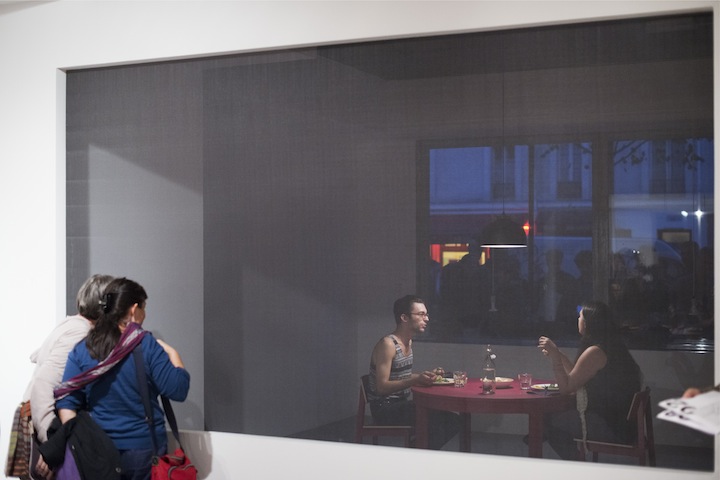

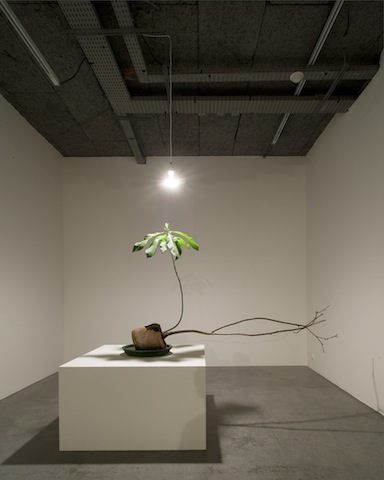

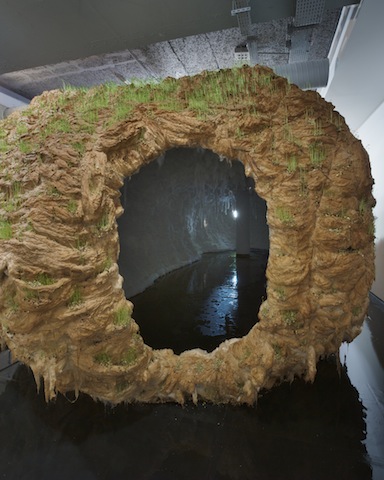

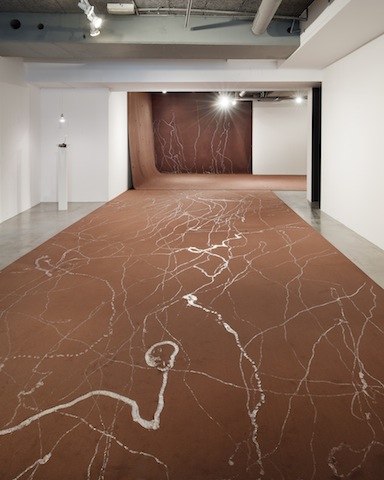

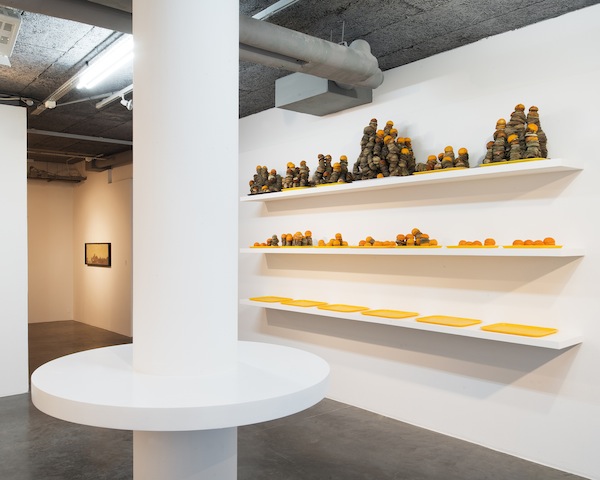
Comments